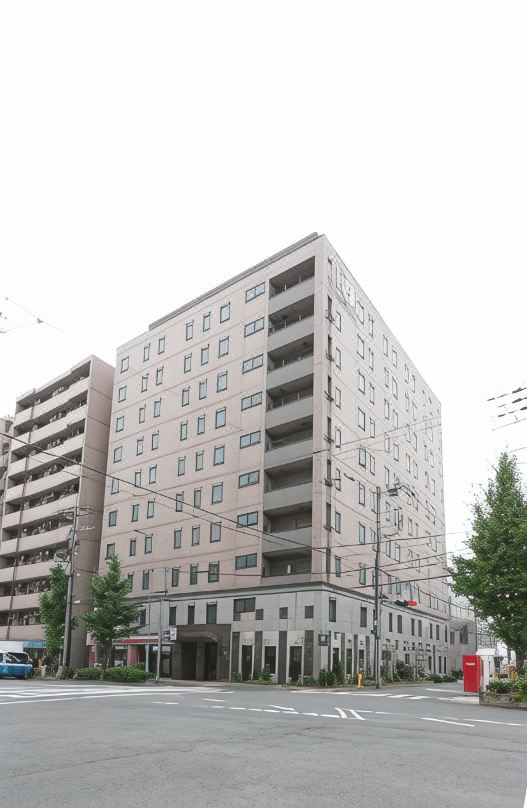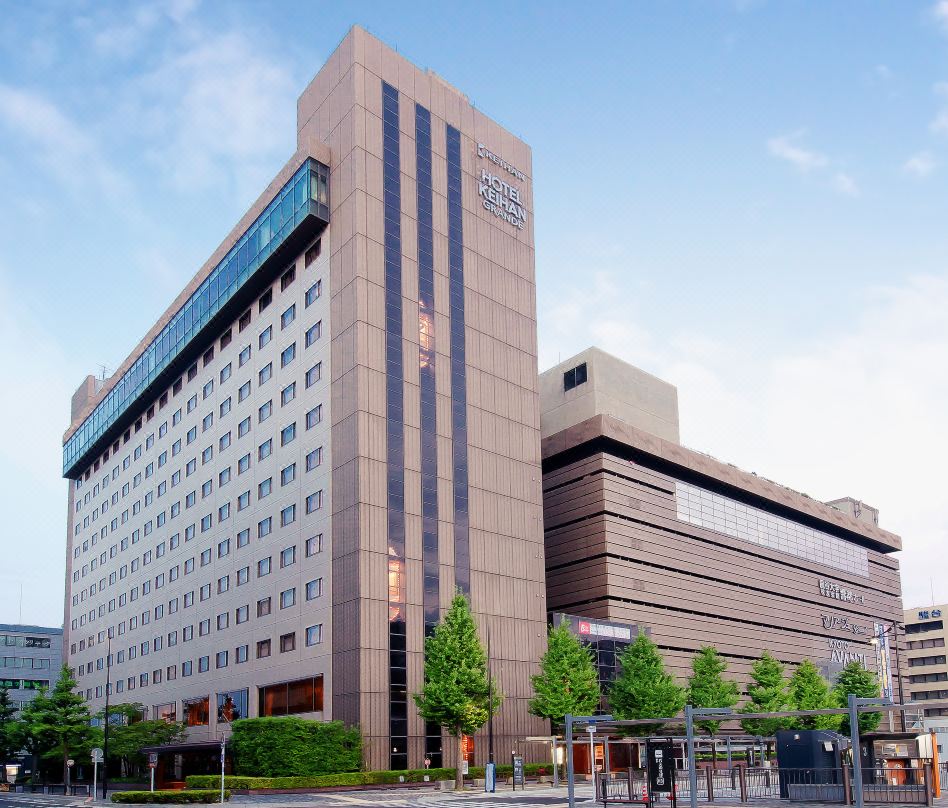Kodaiji Temple Autumn Light-up 2025 in Kyoto: See Dazzling Fall Colors

Kodaiji Temple is a prominent Kyoto temple known for its annual evening autumn illumination event. Held until December 14, this is a must-experience way of enjoying Japanese nature and culture.
Kodaiji Temple: Marvelous Fall Illuminations in Kyoto
Located in Kyoto's Higashiyama area near Gion and Kiyomizudera Temple, Kodaiji Temple is one of the most prominent temples in Kyoto.
Kodaiji was founded in 1606, honoring feudal lord Toyotomi Hideyoshi (1537-1598) and his wife, Nene. In addition to this rich history, there are multiple culturally important structures on the grounds to see, including a garden nationally recognized for its beauty.
Every year, from late October through early December, visitors can see its gorgeous fall foliage illuminated in the evening. The temple hosts evening light-up events year-round, but fall provides a special chance to view a rainbow of colors on the trees.
In 2025, the Kodaiji Autumn Light-up event will be held from October 24 (Friday) until December 14 (Sunday).
Kodaiji Temple Fall Light-up Event
1. Fall Light-up Information: Hours and Tickets
2. Illumination Highlights at Kodaiji
3. Kodaiji Temple Access
4. Places to Visit near Kodaiji Temple
Read also
1. Explore Kodaiji's Fall Light Up: Hours and Tickets

The theme of the illuminations at Kodaiji Temple changes each year, so your visit is sure to offer a unique experience.
The illumination is held daily from 17:00 until 22:00 (final entry at 21:30).
Although the exact dates depend on the peak period for viewing autumn leaves, the event generally runs from late October until early December.

Admission is 600 yen, paid at the front entrance (pictured above). Be sure to take a map (available in Japanese, English, and more) and follow the signs along the route. We recommend wearing a pair of comfortable walking shoes, as there are some hills and stairs to climb around the temple precinct.

The paths are surrounded by greenery speckled with red, yellow, orange, and gold. It'll feel like you've entered a fantasy world from the moment you step inside the temple grounds!
2. Illumination Highlights at Kodaiji

The path runs beside the garden, which is nationally recognized as a historical place of scenic beauty. The placement of the stones in the garden is representative of a Momoyama era-garden (around 1583 to 1600).

Next guests come to the Hojyo, or main hall, from which they can see a special rendition of the rock garden. The colorful rock garden is illuminated at different intervals, so be sure to stay to see it lit-up completely.

Proceed down the path to the Kaisan-do, where the founder of Kodaiji is enshrined. This hall is one of several original structures remaining at the temple and is designated an important cultural property.

To the right of the hall is a gorgeous view of fall colors and a pond. The vibrant trees reflect perfectly in the still water, looking just like a scene from a painting.

Another spectacular view is the enclosed pathway, Garyo-ro. The sight of colorful trees surrounding the corridor is sure to instill a calming feeling.


Kodaiji Temple is also known for its lush bamboo forest that guests can wander through. The mystical, illuminated bamboo is unlike anything you've ever experienced. During the autumn light-up, you can see the colors from the trees peeking through the towering bamboo trunks.

Seasonal flowers at Kodaiji
Other locations at Kodaiji include Otama-ya, a mausoleum, and the tearooms, Kasa-tei and Shigurei-tei, which have also survived fires and natural disasters since they were first constructed and are recognized as important cultural properties. You can view the exterior of these historical structures and take photos.

For those craving some matcha and sweets, stop by the tearoom selling a matcha and wagashi set for 500 yen. You can view the serene, picturesque grounds of the temple while sipping on tea!
Kodaiji is full of sights and experiences, so be sure to take your time walking through the temple grounds.
3. How to Get to Kodaiji Temple

The sloped pathway leading to Kodaiji Temple
Kodaiji Temple is in the Higashiyama district of Kyoto, located close to Gion and Kiyomizudera Temple. Its close proximity to other major spots makes it easy to visit.
To get to Kodaiji from Kyoto Station, take Kyoto City Bus #100 heading towards Kiyomizudera Temple and get off at Kiyomizu Michi, or take the special #206 Kyoto City Bus to Higashiyama Yasui.
From the bus stop, walk east about 5 minutes to the entrance of Kodaiji Temple (pictured above). It takes around twenty minutes in total to get there.
Alternatively, you can walk around 10-15 minutes from the Gion area to get to Kodaiji Temple.
4. Enjoy Fall with Illuminations at Kodaiji

One of the best times to visit Japan is in fall, when the entire country is painted in crimson and gold. Kyoto's Kodaiji is a lovely temple to explore for a serene evening spent appreciating the beauty of nature.
A visit during the daytime will provide another view of the gorgeous leaves. If possible, arrive at the temple before sunset to enjoy both. Entokuin Temple (join-ticket available for 900 yen), Kiyomizudera Temple, and Gion are nearby, as well as museums, shops, and restaurants, so you can enjoy an afternoon and evening of fun in the area.
Hotels near Kodaiji Temple
Read also
FAQ
How long to spend at Kodaiji Temple?
A visit to Kodaiji Temple in Kyoto can vary in length depending on your interests and the depth of exploration you desire. Spending around 1 to 1.5 hours allows for a comprehensive tour of the temple complex, including the main hall, Zen garden, and teahouse. For a more leisurely experience, budgeting 2 hours or more permits thorough appreciation of the intricate architecture and serene gardens. If seasonal events or tea ceremonies pique your interest, you might extend your stay to accommodate these additional activities. Ultimately, allocating time based on your preferences and the desire to fully absorb the cultural and historical richness of Kodaiji Temple can ensure a fulfilling and immersive visit in Kyoto.
How much does it cost to go to Kodaiji Temple?
The entrance fee for Kodaiji Temple in Kyoto is typically around 600 to 900 yen for adults. However, please note that admission fees can vary seasonally and may be subject to change, so it's a good idea to check the official Kodaiji Temple website or inquire locally for the most up-to-date pricing information before your visit. Additionally, there might be separate fees for specific areas within the temple complex, such as the bamboo forest garden or special exhibitions, so it's worth considering any additional costs based on what you plan to explore at Kodaiji Temple.
Is Kodaiji Temple worth visiting?
Kodaiji Temple in Kyoto is a captivating destination that blends historical significance, architectural beauty, and serenity, making it a worthwhile visit for travelers. Founded in 1606, the temple's rich history and traditional Japanese design showcase the cultural heritage of Kyoto. Visitors can immerse themselves in Zen Buddhism through meditation halls and gardens, offering a peaceful retreat from the city's hustle. Kodaiji Temple's evening illuminations and seasonal beauty, especially during cherry blossom and fall foliage periods, add to its allure, creating a magical atmosphere. Additionally, the temple hosts cultural events and exhibitions, providing insights into Japanese traditions and arts. Whether seeking historical insights, architectural marvels, Zen experiences, or a tranquil nature escape, Kodaiji Temple offers a holistic and enriching cultural experience in the heart of Kyoto.
How to get to Kodaiji Temple?
To access Kodaiji Temple in Kyoto, travelers have several transportation options at their disposal. Utilizing public transportation such as buses to the Higashiyama Yasui bus stop, located near the temple, provides a convenient means of reaching the site. Taxis offer a more direct and private mode of transport for those seeking a personalized journey. Walking from nearby attractions like Kiyomizu-dera Temple and Yasaka Pagoda is a delightful way to explore the Higashiyama district on foot, immersing oneself in the surroundings. Seek guidance from accommodations or visitor information centers for tailored recommendations on the best routes and transportation methods to reach Kodaiji Temple from various points within Kyoto. These transportation choices offer flexibility and convenience for visitors keen on experiencing the cultural richness of Kyoto at this significant site.
What is Kodaiji famous for?
Kodaiji Temple in Kyoto is celebrated for its historical significance as a memorial founded in 1606 by Kita-no-Mandokoro, the widow of Toyotomi Hideyoshi, reflecting the power and legacy of the Toyotomi clan during Japan's Azuchi-Momoyama period. The temple's architectural splendor captivates visitors with its traditional Japanese design, featuring main halls, teahouses, and meticulously landscaped gardens. Kodaiji is synonymous with Zen Buddhism, offering spaces for meditation and contemplation that embody the essence of Zen practices. The temple's renowned evening illuminations create a magical atmosphere, enhancing its allure, while the seasonal beauty of its gardens, particularly during cherry blossom and fall foliage seasons, provides captivating scenery. Kodaiji Temple is also esteemed for hosting cultural events, tea ceremonies, and exhibitions that showcase Japanese arts and customs, inviting visitors to delve into Kyoto's and Japan's rich cultural heritage and traditions.
In cooperation with Kodaiji Temple
Main imag by Pixta
An awkward Southern California native living in Osaka. Originally came to Japan on the JET Program in Hyogo Prefecture (Kansai) after studying economics in college, and decided to try to stay.
IUC 10-month program graduate. Vegan and interested in all things Japan-related. Left-handed. Very fond of Kansai.
















































![[2026 Edition] FORMUAL 1 JAPANESE GRAND PRIX Information](https://resources.matcha-jp.com/resize/720x2000/2025/10/05-245984.webp)


![[2025 Update] Namba's spectacular illuminations! "Namba Hikari Tabi" with approximately 1 million shining lights](https://resources.matcha-jp.com/resize/720x2000/2025/12/12-252825.webp)